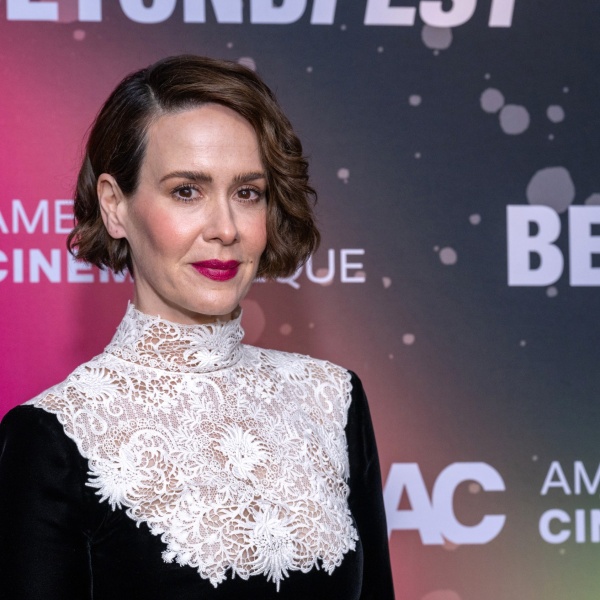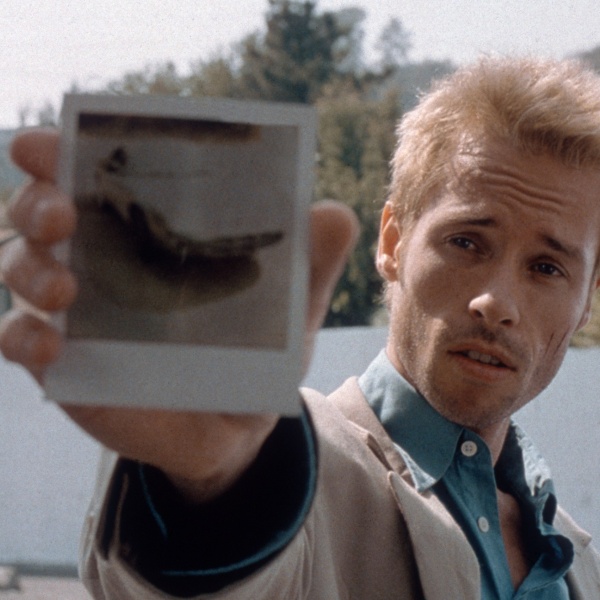
Executive producers of television series talk about needing to do a “bottle episode,” usually about a third of the way through the season when they’ve unnecessarily overspent on the earlier episodes and need to save up so that the finale can go out with a bang. In a lot of ways “Pirates of the Caribbean: On Stranger Tides” (yes, that’s the actual title) feels like a “bottle episode” in the franchise, one in which the scale is cut back tremendously, extraneous mythology shaved away, with the lavish direction of the original trilogy (by Gore Verbinski, who helmed one of this year’s very best movies, “Rango“) replaced with someone whose vision is, if not entirely lacking, somewhat more made-for-TV.
The results, as they say, may vary. On one hand, you’ll be incredibly relieved to know that the film has greatly reduced the number of characters (hope you weren’t too attached to Orlando Bloom or Keira Knightley) and tangential subplots (but there are still too many), while focusing on the shifting allegiances of our beloved Captain Jack Sparrow (once again Johnny Depp, having a ball). But at the same time you’ll wish that things were a little bit, well, bigger – when the last film in the previous trilogy climaxed with dueling pirate ships caught in a mystical vortex, things can only feel slightly miniscule in comparison, no matter the grandly realized visual effects-laden set piece.

“On Stranger Tides” opens in Spain, where a man has been recovered from a fishing net with a journal he claims contains a map to the Fountain of Youth. The British crown gets wind of this discovery and sets its own team out to recover it, led by a powdered-wig-wearing Captain Barbossa (Geoffrey Rush, back to teeth-gnashing malevolence after a largely comic role in the previous film). Captain Jack is shanghaied and placed in the brig of none other than Blackbeard (Ian McShane), whose daughter Angelica (Penelope Cruz) is both onboard, leading the charge, and a former paramour of the previously ambiguous Captain Jack.
The quest of the three groups of grumpy men (the Spaniards, the Brits led by Barbossa, and the pirates led by Blackbeard) are all in a mad scramble for the Fountain of Youth, and sometimes the film feels like an old timey version of movies like “It’s a Mad, Mad, Mad, Mad, Mad World.” Except with rum. And very bad wigs. (Actually, come to think of it, maybe those were a part of the earlier movies too.)
As is the case with a movie based on both a beloved theme park attraction and a marginal young adult novel (by Tim Powers), things get somewhat muddled. Most superfluous is a thematic strain of the script in which various characters are concerned with redemption, primarily dramatized by a young clergyman (Sam Clafin) falling in love with a comely mermaid (Astrid Berges-Frisbey, shimmery without the addition of visual effects). 
It’s the mermaids that facilitate the movie’s greatest, most pulse-pounding sequence, as they reveal themselves to be seducers of men and, more importantly, Lovecraftian sea beasts with fangs and willowy tails – more “Shadow Over Innsmouth” than “The Little Mermaid.” They move stealthily through the water and leap out of the air, tossing out ropes of seaweed and eventually taking down an entire ship of sturdy crewmen, scarier than the burly zombies under the employ (or is it enslavement?) of sorcerer Blackbeard.
What’s pleasant about the mermaid sequence, too, it it’s just the right touch of supernatural hooey. The problem with the latter films in the original trilogy (“Dead Man’s Chest” and “At World’s End“), was that they were too bogged down with mumbo-jumbo – when you have scorned goddesses, sea creatures that cluck like Bill Nighy, giant squids, and purgatory visualized as a vast sea of pearly crabs – well, the skeletal, cursed bogeymen of the first film seem positively quaint. The emphasis on the otherworldly, which required vast special effects and untold computing power, Depp’s flamboyant Captain Jack seems tame in comparison. You couldn’t hear his squawking because everything else was so damn loud.
But Depp doesn’t seem quite the focus of this one, either. There’s nothing wrong with a passive lead character, but it often feels like Captain Jack does little but stand around while other people talk or, occasionally, clash swords. That’s not a character, that’s set dressing. His outrageousness seems to have been tempered, possibly because of his newfound heterosexuality, but it’s odd that they toned down the one special effect that didn’t require vast sums of money. Since the number of superfluous subplots had been whittled down, you’d think someone would have let him riff.
Except that this time around, the fleet is under the unwieldy command of Rob Marshall, director of the Academy Award-winning “Chicago” and the barely watchable “Nine.” It would have been nice if he had applied his love of elaborate choreography to the battle sequences, similar to the elegant way Joe Wright conducted the action in “Hanna,” but instead he’s fallen on a different crutch – his tendency to chop up sequences to where they are just bits of this and that, intermittently mixed with a stagey wide shot (and truly, never have such elaborate stages looked so phony).
Marshall’s approach to 3D, which the film was shot in, is just as problematic. His general sensibility when giving a sequence depth is to shoot through something – a wooden railing, a windowpane, a large blade of tall grass, loads of clumpy fog – but what this does is just obscure the action, or bring unjust attention to the foreground. It’s not 3D if the only thing you’re doing is making the audience look around something to see the action. There are a couple of dynamic scenes – the aforementioned mermaid sequence and one where Blackbeard’s ship comes to life – but these are few and far between. In the somewhat underrated and exceptionally odd “At World’s End,” there’s a sequence where Tom Hollander is walking through a ship as its exploding in slow motion, splintered wood bouncing off of his pristine uniform, and it has more depth than any of the actual 3D on display here.
“On Stranger Tides” isn’t offensively bad, it’s not even poor. It’s just nothing special. And after a while that “nothing special” feels “exceptionally dull.” Johnny Depp mugs (well, come to think of it, so does Geoffrey Rush… And Ian McShane…), Penelope Cruz pouts (while her cleavage heaves), and a bunch of people scramble around tropical locations for reasons only truly discernible to the screenwriters (Terry Rossio and Ted Elliott). As far as a “bottle episode” installment of the series, it’s nice to see the characters breathe (even if some of them choke on unneeded heterosexuality) and the supernatural ballyhoo tamed down a bit, but there’s still something lacking. If Johnny Depp would have truly been let loose again, then it would have been something really special, capturing that unexpected, a-ha fun of the first movie (while hopefully tampering the convoluted nature of the plot). The film has the feeling of familiarity – been there, sailed that. Deathly to a pirate, but more so to an audience member. For a movie called “On Stranger Tides,” it would have benefited from being a whole lot weirder [C+]




